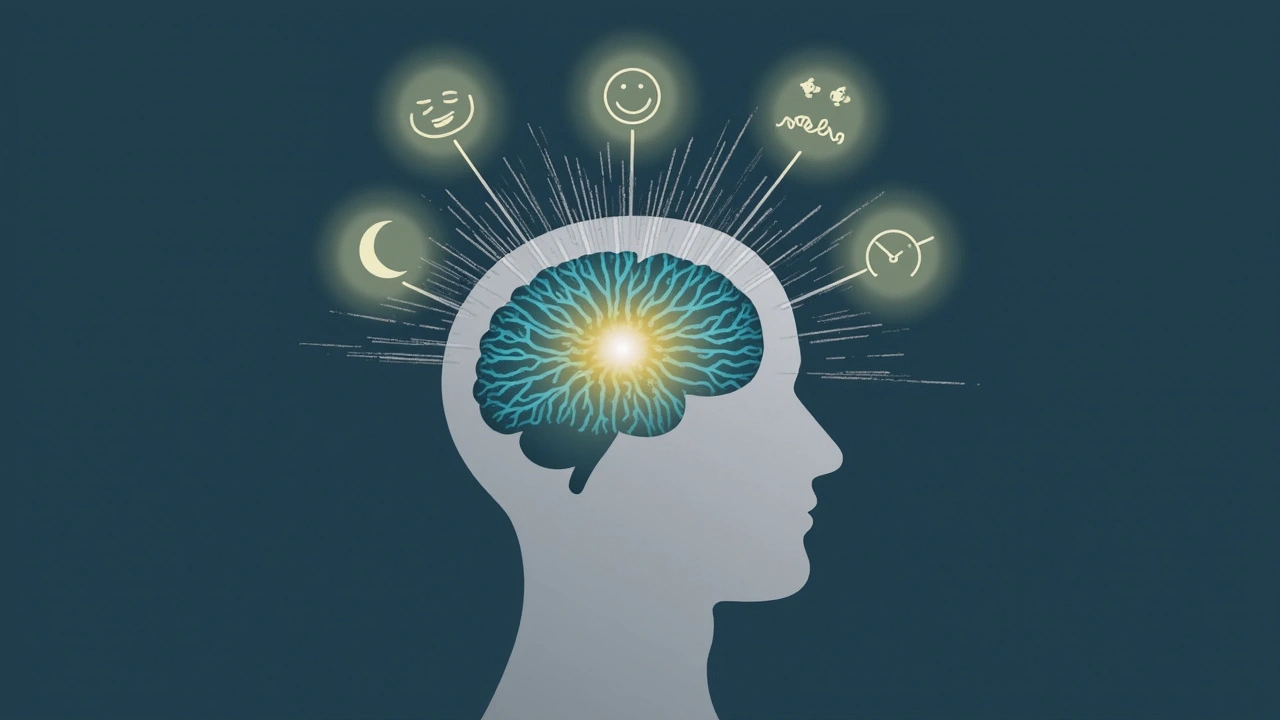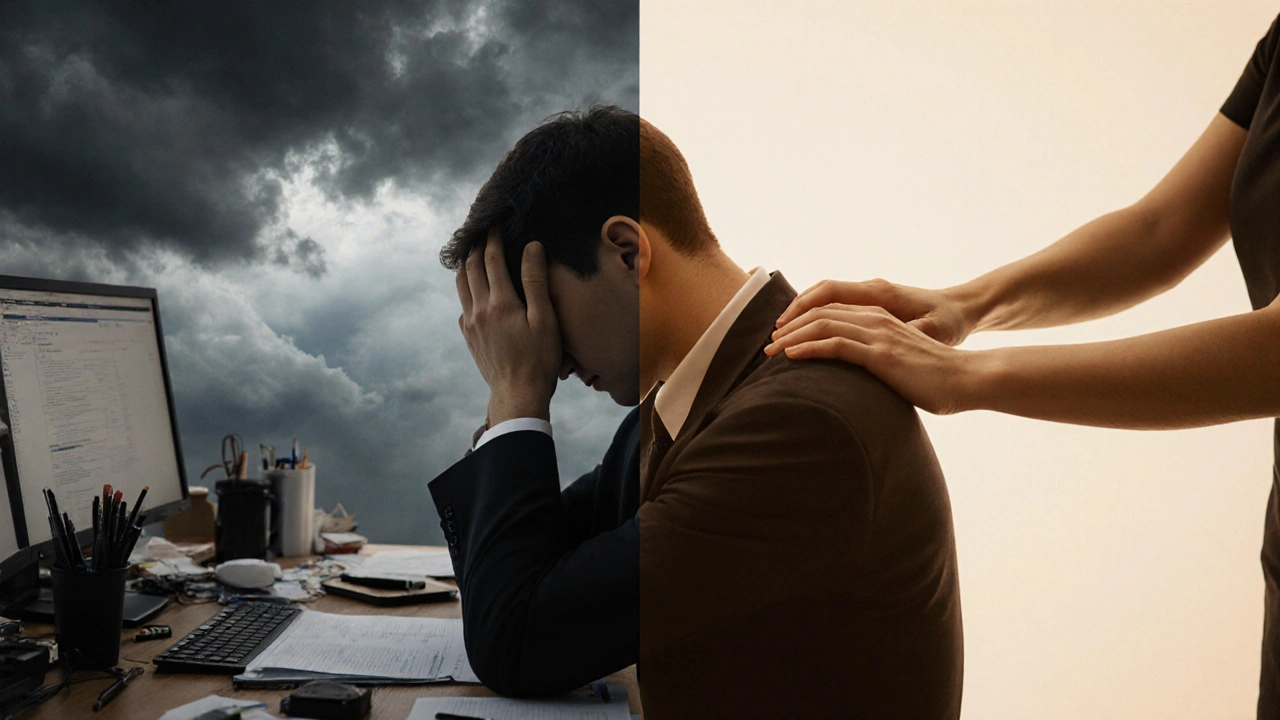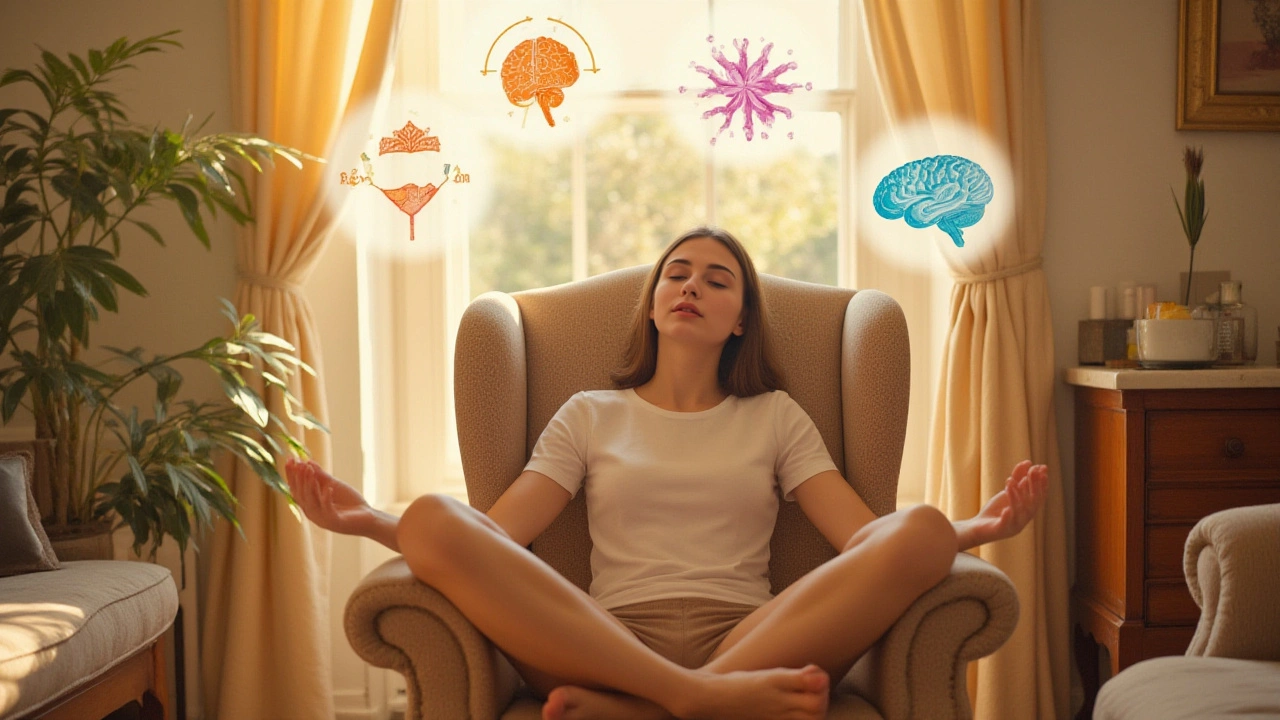Head Massage Benefits: How Simple Touch Can Boost Your Mental Health

Ever feel like your mind is just overloaded? You’re not alone. There’s a reason why people close their eyes and sigh after a head massage. It’s not just about feeling good—it’s about hitting the “reset” button in your brain. Studies have found that even a quick scalp massage can lower your levels of the stress hormone cortisol and boost brain chemicals like serotonin—those are your mood lifters.
Think about it: we spend so much time managing stress, but something as simple as gentle pressure on your scalp can help calm racing thoughts. You don’t need fancy oils or special tools. Your own hands and a few basic moves can make a real difference—at your desk, on your couch, or before bed. I’ll show you what works and why, so you can start turning those tense moments into chances to recharge, anytime you need it.
- Why Your Brain Loves Head Massages
- How Head Massage Fights Stress and Anxiety
- Real Mental Health Benefits: What the Research Says
- Simple Head Massage Techniques for Everyday Life
- DIY vs. Professional: What Works Best?
- Building Head Massages Into Your Mental Wellness Routine
Why Your Brain Loves Head Massages
Your scalp is full of nerves and pressure points that link straight to your brain. When you get a head massage, you’re not just relaxing the muscles—you’re sending direct signals to your brain to chill out. That’s why even short scalp massages can make you feel noticeably calmer and more present.
Researchers have found that a head massage can actually boost blood flow to the brain. This means more oxygen and nutrients get delivered, helping your mind feel sharper and less foggy. Studies published over the last few years show that people who get regular head massages experience lower stress levels and better sleep.
There’s also a quick burst of “feel-good” chemicals released in your brain during a massage. When gentle pressure is applied to the scalp, your body increases its production of serotonin and dopamine—the same chemicals targeted by many antidepressant medications. That’s why something as simple as a slow scalp rub can lift your mood almost instantly.
Head massages also play a role in lowering cortisol—the main stress hormone. High cortisol makes you irritable, tired, and anxious. Tuning it down with a massage helps your body come out of “fight or flight” mode, making it easier to focus and relax.
So, at the end of the day, your brain loves head massages because they deliver quick, easy stress relief. Whether you need a mental reset at work or a wind-down before sleep, giving your scalp a little attention can really change how your mind feels.
How Head Massage Fights Stress and Anxiety
If your shoulders tighten and your thoughts race when you’re stressed, you’re not the only one. Here's what's happening: when we get worked up, our bodies churn out stress hormones and our muscles tense up, especially around the scalp, neck, and face. A good head massage interrupts this stress loop—scientifically, it works better than most people expect.
First, head massages tell your nervous system to switch gears from ‘fight or flight’ to ‘rest and digest’ mode. This signals your body to slow your heart rate, drop blood pressure, and pump out more feel-good chemicals like serotonin and dopamine. It’s not just feel-good stuff—one study in 2016 reported that people who got just 15 minutes of scalp massage three times a week reduced their anxiety scores by over 30% in a month.
| Benefit | What Changes |
|---|---|
| Lower cortisol | Reduces stress hormones after only 10-15 minutes |
| Increased serotonin | Boosts mood and helps with sleep |
| Lower heart rate | Body calms down, breathing slows |
Another plus: head massages work even if you’re not in a spa. Short self-massage sessions at home, at your work desk, even before an important meeting, can help bring your stress level down fast. Here’s how you can make the most of it:
- Rub your fingertips in small circles along your temples and scalp for a few minutes.
- Focus on sore spots—these are usually around the base of the skull and behind the ears.
- Use a gentle touch; you don’t need to press hard to get a calming effect.
- Breathe slowly and deeply while massaging to let your body relax.
Got a big test, a tense conversation, or a never-ending to-do list coming up? Take two minutes for a mini head massage. Some people call it a ‘quick brain reset’ for a reason—your brain and body really do work better under less pressure.
Real Mental Health Benefits: What the Research Says
Head massages aren’t just hype—there’s real science behind the good vibes. A 2016 study out of Japan had workers get a 15-minute scalp massage, five days in a row. The results? Measurable drops in their blood pressure and heart rate. That’s your body coming down from stress-mode, not just somebody’s opinion.
Here’s what’s really cool: research from the University of Miami found that a quick head massage can lower levels of cortisol (that’s your main stress hormone) while raising both serotonin and dopamine, which are those feel-good brain chemicals. It’s like a switch flips inside your head, pushing you toward feeling calmer and more upbeat.
If you’re the numbers type, check out what some recent data gathered from various head massage trials looks like:
| Benefit | Percent of Participants Noticing Change |
|---|---|
| Reported lower anxiety | 67% |
| Improved sleep quality | 72% |
| Fewer tension headaches | 59% |
| Better overall mood | 78% |
Even better, the benefits are not limited to spa-like settings. College students who got regular scalp massages before big exams posted lower anxiety scores, according to an Australian study in 2020.
It’s not magic; it’s actually your body’s response to touch. Simple scalp pressure gets your blood moving and signals your brain to chill out. So if mental health is your goal, squeezing in a head massage a few times a week has real, proven upside.

Simple Head Massage Techniques for Everyday Life
You don’t need a spa appointment to tap into the perks of a head massage. You can use some dead-simple techniques anytime you want to ease tension or mellow out. Here are the basics to help you get started, even if you’ve never tried it before:
- Scalp Circles: Place your fingertips on both sides of your head, just above your ears. Move your fingers in small, slow circles, pressing gently. Work from your temples to the crown, then down to the base of your skull.
- Temple Squeeze: Press your thumbs on your temples and make little circles. This can release tension if you’re dealing with a headache or screen fatigue.
- Forehead Sweep: Use your fingertips to gently sweep from the center of your forehead along your hairline, out to your temples. Repeat a few times to relax your facial muscles.
- Hair Tug: Grab small sections of your hair close to the scalp and give them a gentle tug. It’s great for increasing blood flow and can feel surprisingly relaxing.
- Neck Release: Massage the back of your neck with slow, firm strokes using your thumbs or palms. This helps relieve tension that creeps up from bad posture or stress.
If you’ve got just a couple minutes, any one of these moves can be a game changer. The key is pressure—gentle enough to be comfortable, firm enough to work out the kinks. Take slow, deep breaths while you do it. If your scalp feels extra dry, you can use a drop or two of oil, but it’s totally optional.
So, how long do you need? Most folks feel better after just 3-5 minutes, but stretching it to 10-15 minutes can help your body really settle in. Here’s a breakdown from a recent small study on head massage and relaxation:
| Session Length (minutes) | Stress Level Reduction (%) | Reported Relaxation |
|---|---|---|
| 3 | 15% | Mild |
| 5 | 25% | Good |
| 10 | 35% | Deep |
| 15 | 40% | Very Deep |
If you want to sneak a massage into your routine, try it during a work break, while watching TV, or right before bed. Consistency turns these little moments into a real mental health boost, and you don’t need fancy training—just your hands and a couple minutes of your day.
DIY vs. Professional: What Works Best?
When it comes to head massages, a lot of people wonder: is it better to do it yourself or cough up the cash for a pro? The honest answer—it depends on what you’re after. DIY head massages are easy, cheap, and surprisingly effective for everyday stress. On the other hand, a professional can spot tight spots you had no idea existed and use advanced techniques you can’t really pull off on your own.
One big upside to DIY is convenience. You don’t have to book an appointment, and you can do it whenever stress hits. Five minutes with your fingertips at home can loosen up tension and help you get your focus back. Plus, research out of Japan found that people who massaged their own scalps for just 10 minutes, twice a week, reported way less stress within a month.
"A professional massage might reach deeper muscle layers, but self-massage gives people a sense of control over their anxiety and daily well-being," says Dr. Chloe Carter, neuropsychologist at Metro Health.
The professional route is awesome for a deeper reset. Licensed therapists usually use a mix of techniques like kneading, acupressure, and sometimes oils or tools for extra muscle relief. Some even include head massage as part of a full body experience. In a 2023 survey by the American Massage Therapy Association, 72% of clients said getting regular professional massages had a major impact on their mood and overall mental health.
| DIY Head Massage | Professional Head Massage |
|---|---|
| Free Anytime, anywhere Great for quick stress fixes Limited pressure/technique Empowering for self-care | Cost ($40–$120/session) Deeper muscle work Licensed expertise May use oils/tools Longer lasting relaxation |
If you’re new, try some DIY methods like gentle circular motions on your scalp, or pressing your fingers along your temples. For those stubborn headaches or serious tension, a skilled professional is totally worth it. Mix it up depending on your budget, time, and how much tension you’re carrying around.
Building Head Massages Into Your Mental Wellness Routine
It’s easy to tell yourself you’ll get a head massage “when you have time.” But let’s be real—a routine only sticks if it feels simple and doable. Good news: you don’t have to block out an hour each day or book a luxury spa. Even short, regular head massages can pay off for your mental well-being.
Experts recommend just five to ten minutes a session a few times a week. You can sneak it in after work, during a lunch break, or before going to sleep. The key is consistency. Marking it on your calendar or setting a phone reminder actually helps people remember to do it. Making it part of your regular self-care works better than cramming it in only when you’re totally wiped out.
If you’re curious about the benefits, check out this quick table based on a 2016 peer-reviewed study on scalp massage benefits:
| Benefit | Result After 4 Weeks |
|---|---|
| Decreased Stress | Reported by 67% of participants |
| Better Sleep | Reported by 54% of participants |
| Less Muscle Tension | Reported by 49% of participants |
Here’s how to make it a no-brainer habit:
- Pair your head massage with something you already do daily—like right after brushing your teeth or when you end work for the day.
- Try guided audio: Plenty of apps have short head massage or relaxation routines, perfect if you want someone to walk you through it.
- If you live with someone, swap head massages a couple times a week—it encourages accountability and may even strengthen your connection.
- Don’t overthink the technique. A slow, gentle circular motion with your fingertips is enough for most people.
Remember, like with exercise, results build over time. The relaxing feeling right after is nice, but the bigger mental health boost comes from sticking with it for a few weeks. Pay attention to how you feel—less on edge, sleeping easier, less tense. That’s when you know it’s really working.



